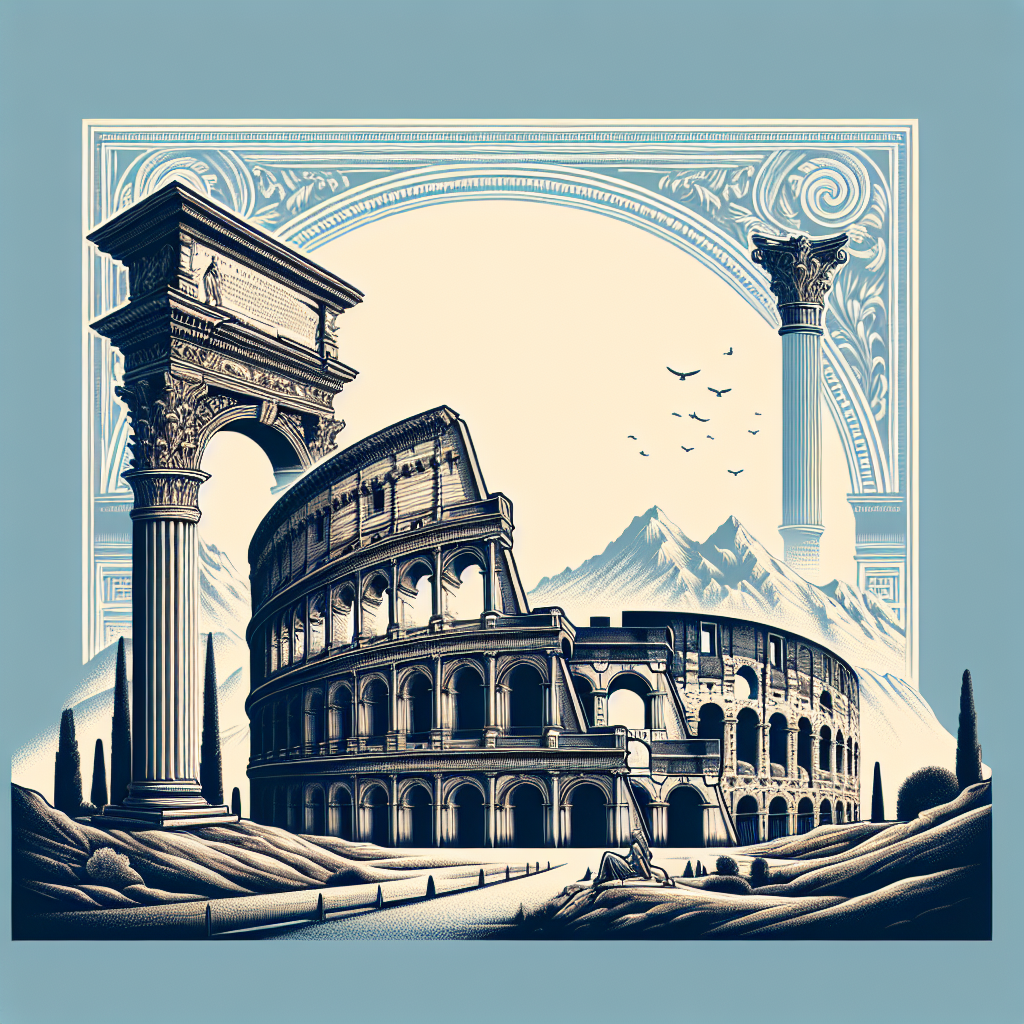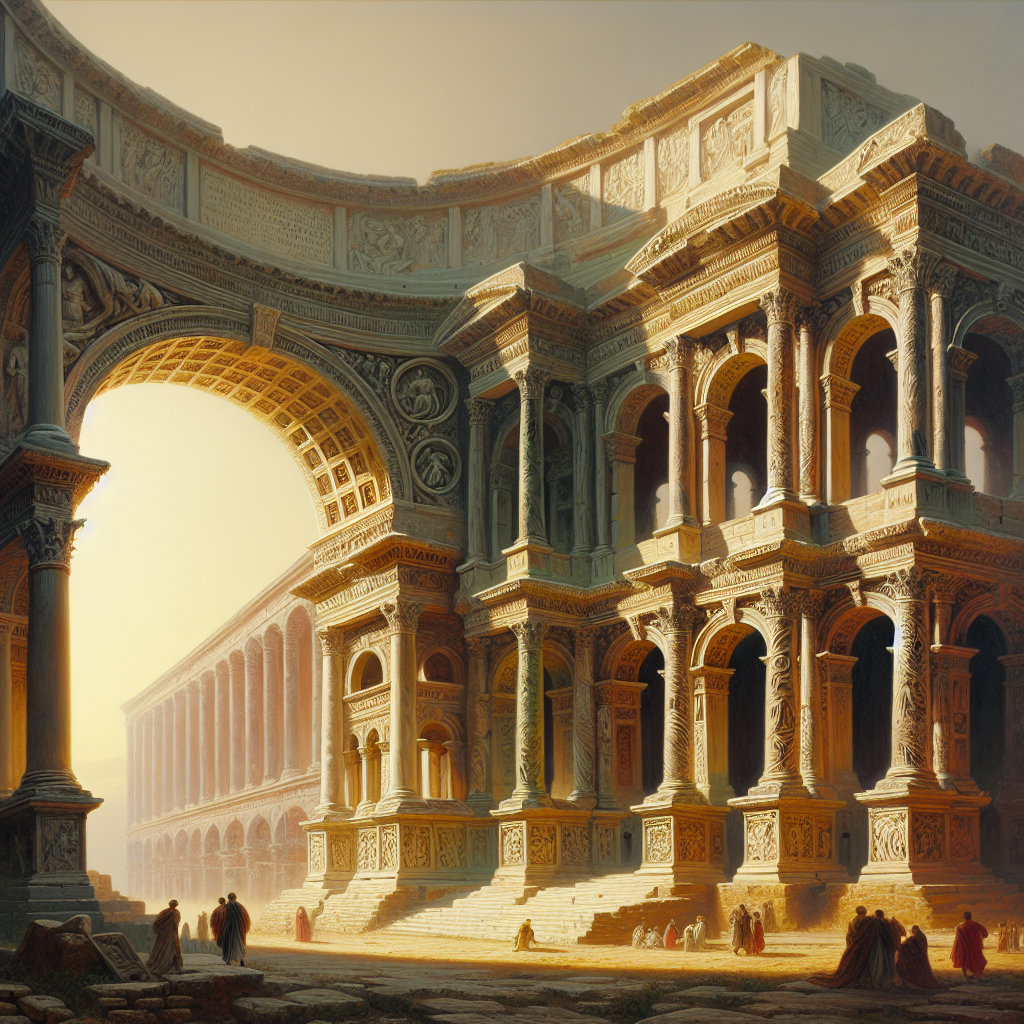Get ready to embark on a journey through the captivating history of Southern France, where the influence of Roman architecture has left an indelible mark on the landscape. From ancient amphitheaters to grandiose arches, the remnants of this architectural style are a constant reminder of the rich cultural heritage that Romans brought with them to this enchanting region. Discover the fascinating stories behind these architectural marvels as we delve into the history and impact of Roman architecture in Southern France.
The Influence of Roman Architecture in Southern France
1. Roman Architecture in Southern France: A Brief Overview
Roman architecture has left an indelible mark on the landscape of Southern France. From magnificent amphitheaters to awe-inspiring aqueducts, the region is adorned with a rich tapestry of Roman architectural marvels. The Romans’ mastery of engineering and their keen eye for aesthetics continue to shape the architectural landscape of Southern France to this day. Let us delve into the various aspects of Roman architecture and explore the profound influence it has had on this region.
2. Roman Amphitheaters in Southern France
One cannot begin to discuss the influence of Roman architecture in Southern France without mentioning the striking amphitheaters that dot the region. These grand structures were not only venues for gladiatorial contests and other spectacles but also served as symbols of Roman power and prestige. The amphitheaters, such as the famous Arena of Nîmes and the Amphitheater of Arles, showcase the Romans’ innovative use of concrete, arches, and vaults. Their designs have endured the test of time and have inspired countless architectural marvels around the world.

3. The Influence of Roman Temples in Southern France
Roman temples, known for their grandeur and spiritual significance, have left an indelible mark on Southern France. These sacred spaces were meticulously designed to honor deities and provide a place for religious rituals. The Maison Carrée in Nîmes, a beautifully preserved Roman temple dedicated to the sons of Agrippa, is a testament to the architectural prowess of the Romans. Its Corinthian columns and harmonious proportions continue to inspire architects and art enthusiasts alike.
4. Roman Aqueducts: A Testament to Engineering Brilliance
Roman aqueducts stand as towering testaments to the Romans’ engineering genius. These remarkable structures, such as the Pont du Gard, played a crucial role in bringing water to the growing settlements of Southern France. The aqueducts employed innovative techniques, including arches and gravity, to transport water over great distances. Their sturdy construction and meticulous design ensured a constant water supply, a feat of engineering brilliance that continues to amaze and inspire to this day.

5. The Legacy of Roman Bridges in Southern France
Roman bridges have played an integral role in connecting communities and facilitating trade in Southern France. These bridges, such as the Pont Julien, showcase the Romans’ mastery of bridge-building techniques. With their elegant arches and robust construction, these structures have stood the test of time and continue to serve as vital transportation links. The legacy of Roman bridges can be seen in modern-day Southern France, where countless bridges follow in the footsteps of their ancient predecessors.
6. Roman Villas: Luxurious Living for the Elite
Roman villas epitomized luxury and opulence, serving as lavish residences for the elite in Southern France. These grand houses were adorned with intricate mosaics, frescoes, and expansive gardens, offering a glimpse into the lifestyles of the Roman aristocracy. The Villa Romana del Casale in Sicily, although not located in Southern France, gives us a vivid picture of the splendor found within these magnificent dwellings. The influence of Roman villas on the architecture of Southern France can be seen in the incorporation of lavish elements in contemporary homes and buildings.
7. Roman Defensive Walls and Fortifications in Southern France
The Romans constructed formidable defensive walls and fortifications throughout Southern France to protect their settlements and borders. Examples such as the walls of Aigues-Mortes and the Fortified City of Carcassonne demonstrate the Romans’ expertise in fortification design. These imposing structures provided both protection and a sense of dominance, as they showcased the awe-inspiring might of the Roman Empire. The influence of Roman defensive walls can be seen in the fortified towns and citadels that still stand in Southern France, serving as a constant reminder of their architectural legacy.
8. Roman Influence on Southern French Cathedrals
The influence of Roman architecture can be found in the majestic cathedrals of Southern France. While Romanesque and Gothic styles dominate these cathedrals, traces of Roman architectural elements can still be discerned. The use of arches, columns, and domes in structures like the Cathedral of Saint-Étienne in Limoges and the Basilica of Saint-Sernin in Toulouse pays homage to the enduring legacy of Roman architectural techniques. The fusion of Roman and medieval styles in Southern French cathedrals creates a unique and captivating aesthetic.
9. The Impact of Roman Archways and Columns in Southern France
Roman archways and columns have had a profound impact on the architectural landscape of Southern France. These architectural elements, known for their elegance and structural stability, have been adopted in various forms throughout history. The triumphal arches, such as the Arch of Constantine in Arles, have inspired the creation of similar structures across the region. The towering columns of the Maison Carrée have served as a reference for classical architectural design. The impact of Roman archways and columns is evident in the grandeur and sophistication of Southern French architecture.
10. Roman Town Planning and Street Design in Southern France
The Romans’ genius for urban planning and street design is evident in the layout of many towns and cities in Southern France. The grid-like street patterns and organized infrastructure can be traced back to Roman influence. The ancient city of Nîmes, for example, boasts a well-preserved street plan reminiscent of Roman town planning. The Romans’ emphasis on efficient transportation, public spaces, and functional urban design has left an enduring mark on the development of Southern French towns and cities.
In conclusion, Roman architecture has had a remarkable influence on Southern France. From majestic amphitheaters to grand temples, from ingenious aqueducts to luxurious villas, the Romans’ architectural achievements continue to inspire awe and admiration. Their legacy can be seen in the streets, buildings, and public spaces of the region, reminding us of their unrivaled engineering prowess and aesthetic sensibility. The influence of Roman architecture in Southern France is a powerful testament to the enduring impact of the Roman Empire.
